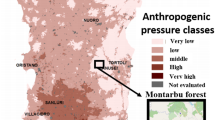Abstract
The concentrations of Al in fish gills has been used as a measure of fish exposure to this metal in acidified waters. This experiment was designed to determine if other fish tissues also accumulate Al and thus possibly contribute to the cause of death. Rainbow trout (Salmo gairdneri) were exposed to the following fours test conditions for 48 hr or until death: (1) pH 6.8, <0.001 mg.L−1 Al (n=6); (2) pH 5.2, <0.001 mg1L−1 Al (n=2);(3) pH 5.2,1.0 mg.L−1 Al (n=5); (4) pH 6.8, 1.0 mg.L−1 Al (n=3). The trout were held in synthetic, low Ca water prior to, and during, experimentation. Esophagus-stomach, gonad, gall bladder, gill (left and right), heart, intestine, kidney, liver, muscle (epaxial), and spleen were digested in a 4:1 mixture of HNO3:HClO4 and analyzed by Inductively Coupled Plasma Emission Spectrophotometry. Elevated Al concentrations were found in gill and gastrointestinal tissues. Left and right gills of fish exposed to pH 5.2, 1.0 mg.L−1 Al were the only tissues found to be significantly different (p<0.01) between the test conditions. The mean total Al concentrations of these test 3 fish, for the left and right gill were 3.61 and 4.33 mg.g−1 Al dw. The Al concentration in thle gastrointestinal tissues of the fish exposed to pH 6.8 at 1.0 mg.L−1 Al was greater than that of the control fish, but not statistically significant. These results suggest that the analysis of whole gill remains an effective indicator of Al exposure in fishes at low pH.
Similar content being viewed by others
References
Anonymous: 1975, Standard methods for the examination of water and wastewater, 14th ed., American Public Health Association, Washington, D.C. 1193 pp.
Berg, D.J. and Burns, T.A.: 1985, J. Freshw. Ecol. 3, 113.
Buergel, P.M. and Soltero, R.A.: 1983, J. Freshw. Ecol. 2, 37.
Christensen, G.M. and Tucker, J.H.: 1976, Chem.-Biol. Interactions 13, 181.
Dickson, W.: 1975, Rep. Inst. Freshw. Res., Drottningholm 54, 8.
Dickson, W.: 1978, Verh. Int. Verein. Limnol. 20, 851.
Grahn, O.: 1980, Fishkills in two moderately acid lakes due to high Al concentrations. In: Conf. Ecol. Impact Acid Precip., Drabøs, D. and A. Tollan (eds.), Norway 1980, SNSF Proj., pp. 310–311.
Harvey, H.H., Dillon, P.J., Fraser, G.A., Somers, K.M., Fraser, P.E. and Lee, C.: 1982, Elevated metals and enhanced metal uptake in fishes in acid stressed waters, Extended Abstract, Am. Chem. Soc., Div. Environ. Chem., pp. 438–441.
Hunter, J.B., Ross, S.L., Tannahill, J.: 1980, Wat. Pollut. Contr. 79, 413.
Jansz, G.F.: 1983, Some physiological consequences of exposure to and recovery from environmental acid stress with varied calcium concentrations in rainbow trout (Salmo gairdneri), M.Sc. thesis, University of Toronto.
Leivestad, H.: 1985, Aqueous speciation of A1 and toxic effects on Atlantic salmon, Abstr. Int. Sym. Acidic Precip., Muskoka, September 1985, pp. 95–96.
Muniz, I.P. and Leivestad, H.: 1979, Langtidseksponering av fisk til surt vann, Forsøk med bekkerøye Salvelinus fontinalis Mitchill (Long term exposure of brook trout to acidic water), IR44/79, SNSF Proj., 1432 As, Norway. 32 pp.
Muniz, I.P. and Leivestad, H.: 1980, Toxic effects of A1 on the brown trout, Salmo trutta L. In: Conf. Ecol. Impact Acid Precip., Drabløs, D. and A. Tollan (eds.), Norway 1980, SNSF Proj., pp. 320–321.
O.M.E.: 1980, Quality control report, Ontario Ministry of the Environment, Water Quality Section, Laboratory Services Branch, Rexdale, Ontario. 58 pp.
Ray, A.A.: 1982, SAS User's Guide: Statistics, 1982 ed., Cary, N.C., SAS Inst. Inc. 584 pp.
Robinson, J.W. and Deano, P.M.:1985, J. Environ. water Health A20, 193.
Schofield, C.L.:1977, Acid snow-melt effects on water quality and fish survival in the Adirondack Mountains of New York State, Res. Tech. Completion Rept. Proj. No. A072-NY. 26 pp.
Sorenson, J.R.J., Campbell, I.R., Tepper, L.B. and Lingg, R.D.: 1974, Environ. Health Persp. 8, 3.
Wright, R.F., Conroy, R., Dickson, W.T., Harriman, R., Henriksen, A. and Schofield, C.L.: 1980, Acidified lake districts of the world: a comparison of water chemistry of lakes in southern Norway, southern Sweden, souterhwestern Scotland, the Adirondack Mountains of New York and southeastern Ontario. In: Conf. Ecol. Impact Acid Precip., Drabøs, D. and A. Tollan (eds.), Norway 1980, SNSF Proj., pp. 377–389.
Author information
Authors and Affiliations
Rights and permissions
About this article
Cite this article
Lee, C., Harvey, H.H. Localization of aluminum in tissues of fish. Water Air Soil Pollut 30, 649–655 (1986). https://doi.org/10.1007/BF00303328
Issue Date:
DOI: https://doi.org/10.1007/BF00303328




